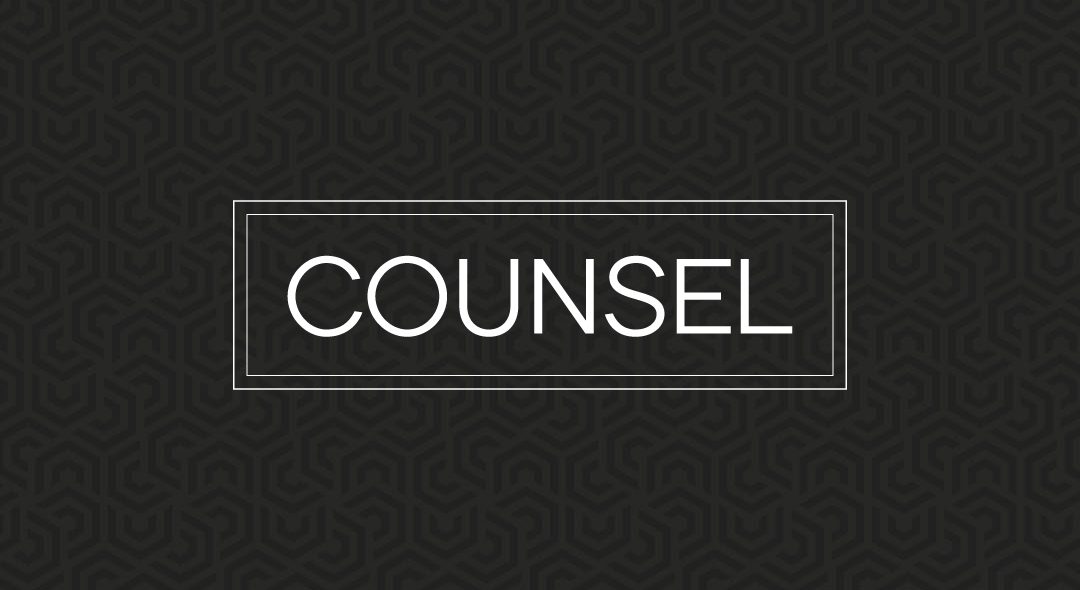New Large-Sample Poll Puts Federal Battlegrounds into Focus
(Toronto, June 10, 2021) – A new national public opinion poll by Counsel Public Affairs finds the Liberal Party of Canada continuing to hold a lead (Liberal 31.9%, Conservative 27.6%, New Democratic Party 17.9%, Green Party 6.9%, Bloc Québécois 7.7% and the People’s Party of Canada 4.2%). Beyond the top line numbers, the real story about the next election is buried deep in the detailed regional and issues results.
This new poll comes from Counsel Public Affairs’ new national polling practice, Counsel Research, led by David Murray, the Conservative Party of Canada’s 2019 election pollster. Counsel Research’s large sample polling – 3,175 Canadians in this survey – provides deeper insights into the views of key groups of Canadians than typical polls.
“While Canada’s political parties will claim the only poll that counts is the one on election day, they are all looking very closely at the detailed cross-tabs within polls like ours to inform their strategic decisions,” said David Murray, Senior Consultant, Federal Advocacy & Polling at Counsel. “What these numbers tell me is that the path to majority government will take more than a successful end to the pandemic. The numbers are going to have to move in key battlegrounds like BC’s Lower Mainland and the Greater Toronto Hamilton Area, because in Quebec, none of the federalist parties are gaining traction.”
The poll was conducted over June 1, 2021 to June 4, 2021.
Key findings and analysis include:
Quebec Playing Spoiler: Bloc Quebecois could block a Liberal Majority and hopes of a Conservative or NDP breakthrough.
-
-
-
- The Liberals (34%) and Bloc (33%) are running neck and neck in the Province of Quebec with the Conservatives (14%) and New Democrats (10%) trailing badly.
- The Bloc Quebecois has increased its support in the seat-rich areas outside of Montreal and Quebec City, stalling Liberal growth in Quebec. Just 8% of voters in those key regions see themselves being accessible to, i.e. open to considering voting for, the Conservative Party.
- Despite taking the party to Official Opposition status in 2011, Quebec remains the New Democratic Party of Canada’s weakest link. Not only are the NDP in 4th place with just 10% in the province, but potential NDP swing voters are few and far between.
-
-
Ontario: Liberals Lead, but Considerable Potential for 3-Way Contests
-
-
-
- Province-wide, the Liberals lead (38%), followed by the Conservatives (28%), New Democrats (19%), Greens (9%) and the People’s Party (5%)
- In Toronto, the Liberals hold a commanding 20% lead, but that level is nearly 8 points lower than their support in the 2019 election, to the benefit of third place New Democrats.
- In the Greater Toronto Hamilton Area, both Liberals and Conservatives have lost support to the NDP, creating more three-way races where vote splits could make significant differences between who wins and loses in one of Canada’s most vote-rich areas.
-
-
Growth Potential for Each Party
-
-
-
- Overall, Canada’s NDP has the greatest potential to grow, with 24% of all voters indicating openness to voting for the party even though their present intention rests with another party. 16% of voters said the same for the Liberals, and 13% said the same for the Conservatives.
- In the Prairies, 10% of those who voted for Andrew Scheer’s Conservatives say they now intend to vote for the People’s Party of Canada, the Maverick Party, or “Another Party.” Unless the Conservatives turn the tide, several of their urban prairie seats, including ridings in Edmonton and Calgary, could be at risk.
- For the Liberals, the next tier of voters is concentrated in British Columbia (especially outside of Vancouver), Manitoba, Northeastern Ontario, and Atlantic Canada.
- Of note, public sector unionized workers and visible minorities remain some of the most potent demographics for the Liberals as they seek to expand their voter base.
- Voters between the ages of 18 and 34 represent a far stronger concentration of swing voters than any other age group, increasing the likelihood their issues will be front and centre during the next campaign.
-
-
A Snap Election? There are Mixed Feelings
-
-
-
- Less than half of all Canadians want an election before 2022.
- Conservative supporters and their accessible swing voters are among those most eager for an early election, with 2/3 indicating they want to head to the polls before the end of the year.
- Less than 30% of current Liberal supporters and accessible swing voters want a fall election.
- 47% of NDP supporters and 30% of Bloc Quebecois supporters want an election before 2022.
-
-
The full summary of findings and analysis from Counsel’s poll can be found here.
Click here for detailed results.
Methodology:
Counsel surveyed 3,175 people over the period of June 1 – June 4 2021 using the Lucid Exchange Platform, which blends a variety of partner panels. The margin of error for a comparable probability-based random sample of the same size is +/- 1.7%, 19 times out of 20.
Results are sub-regionally weighted for:
- Age and birth sex according to the 2016 Census.
- 2019 Federal Vote.
-30-
About Counsel Public Affairs
Counsel is one of Canada’s most respected and fastest-growing, national independent government relations and strategic communications companies with consultants in Ottawa, Toronto, Regina, Calgary, Vancouver and Victoria. For more information on Counsel Public Affairs visit www.counselpa.com
For media enquiries:
Shanice Scott, Senior Communications Consultant
416.920.0716 ext. 240

